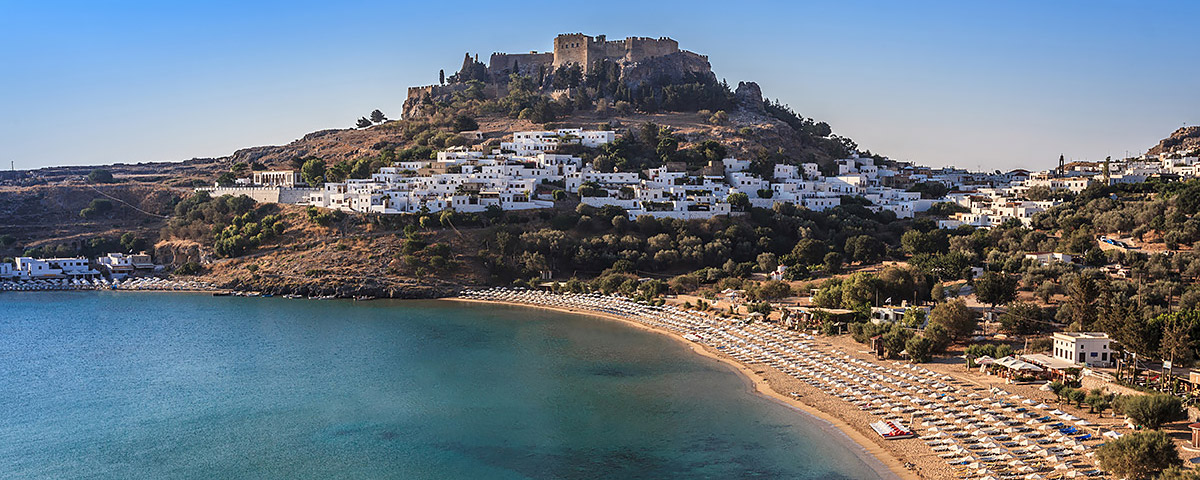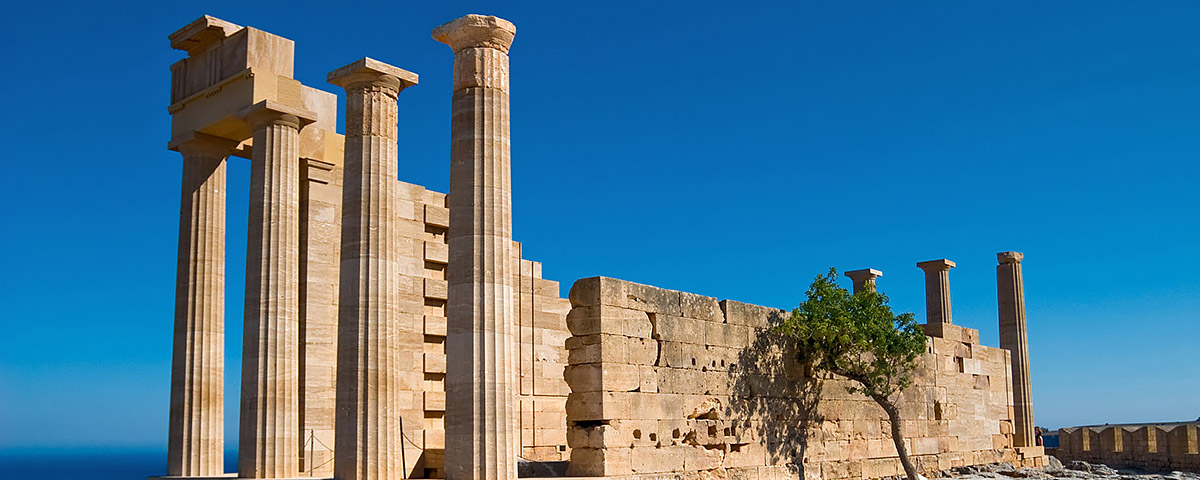-
Rhodes Island Greece
Rhodes seduces and visitors fall in love
-
There are many reasons why Rhodes is one of the most popular resorts in the Mediterranean: the warm hospitality of the islanders, the culture and customs of village folk, the natural surroundings (crystal clear seas, beautiful countryside and beaches) and the bright sun are just some of the ways that “the island of the sun” makes her visitors fall in love.
Rhodes is really magical, she spell-binds her visitors to return to her embrace every year! -
The Island of Sun
According to mythology, Rhodes was submerged under the deep blue waters of the Aegean Sea
-
When it emerged, Helios, the sun god, was so enchanted by its unique beauty that he asked Zeus to give it to him. Thus, mythology became reality as the island is blessed with 300 days of sunshine a year. Rhodes, situated in the south-eastern Aegean Sea, is the capital of the Dodecanese prefecture and has a population of approximately 115,000. It is the 9th largest island in the Mediterranean Sea and 4th largest Greek island (after Crete, Evia and Lesvos).
Rhodes has been famous since antiquity as the site of Colossus of Rhodes, one of the ancient Seven Wonders of the World, which was destroyed by an earthquake 2000 years ago. -
Lindos
The ancient city-state of Lindos, protected by its acropolis, was a major maritime power
- The city-state was founded around 10th century BC. It was admired for its wealth, beauty and strategic position in the Mediterranean Sea. Rising above the town is the acropolis of Lindos which in classical times was dominated by the massive temple of Athena Lindia, dating back to around 300 BC. This natural citadel was fortified successively by Greeks, Romans, Byzantines, Knights of St John and Ottomans.
-
Lindos today
- Lindos is situated on the south-eastern coast of Rhodes and provides an excellent base to explore the many delights of the "island of sun". Lindos boasts a main beach, the nearby smaller Pallas beach and on the other side of the village, St. Paul’s Bay, traditionally the place where St. Paul first set foot on the island and brought Christianity to Europe. Wander through the narrow cobbled lanes between white-washed houses, historic mansions (known as Captain’s Houses), Byzantine churches to reach the rocky acropolis or hire a Lindos ‘taxi’ (a donkey!) for a more leisurely ascent. Be brave and leave the main streets and explore the pedestrianised backstreets! Amongst the villas you will find rooftop taverns with fresh fish and souvlaki accompanied by a cold local wine, open air cafes and local shops.
-
Acropolis of Lindos
The site of the temple dedicated to the goddess Athena
- The Acropolis of Lindos is one of the most historic sites in Greece. Walk up (approx. 15 mins.) or hire a donkey. Pass through remains left by ancient Byzantine and the Knights before reaching the top where astonishing views include St Paul's Bay where the saint supposedly landed on the island and brought Christianity to Europe. Open from 8.30am to 14.40pm daily except Mondays. Opening times are extended in the high season.
-
The city of Rhodes
The Medieval town of Rhodes, built by the Knights of St. John, is one of the best preserved medieval towns in Europe. In 1988 it was designated as a UNESCO World Heritage Site.
-
The city was created by the many nations that used Rhodes as a geographical and cosmopolitan crossroads.
The Medieval City
Rhodes is the largest and best preserved Medieval city in the world. Walk along the cobbled streets, through the arches and enjoy the great architectural masterpieces of Byzantine, Gothic and Ottoman influences. Enter through one of the nine grandiose Gothic gates to find innumerable churches. The Knights of the Order of St. John added gothic elements to the lodging of the Twelve Nations in the Knight’s street leading to the unique Grand Master’s Palace.
The Palace of the Knights
Standing for 800 years, it housed the Masters of the Knights and has been a symbol of power through the centuries. The chambers are decorated with shields of the Knights, majestic towers and impressive doors. -
Places of interest
Official Website: www.rhodes.gr
-
- Acropolis of Lindos
- Rhodes Old Town (walled medieval city)
- Acropolis of Rhodes
- Kallithea thermes (spa)
- Filerimos
- Valley of the Butterflies
- Temple of Apollo
- Ancient Kamiros
- Palace of the Grand Masters
- Kahal Shalom Synagogue in the Jewish Quarter
- Archeological Museum
- Castle of Monolithos
We use cookies to ensure that we give you the best possible experience on our website.
Find out more Cookie Policy, Privacy Policy
ACCEPT



